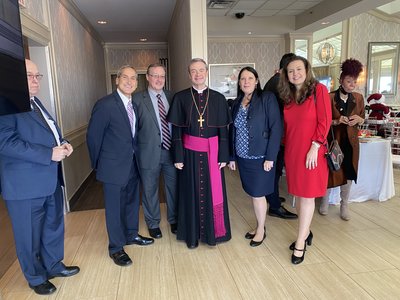Porcelli: To Be, Or Not To Be – CTE? (3/30)
That’s the major question this column explores each week. How can William Shakespeare help students find the answers they seek? Several of his characters offer a great deal of wisdom on the subject.
In one of his most famous lines, Hamlet says, “To be, or not to be, that is the Question.”
Consider how Shakespeare can help students answer this question today… To Degree, or not to Degree – That, is today’s question!
Hamlet uttered that famous line while contemplating his future. Many students today, primarily those in secondary schools, struggle to find their ideal educational path to their future. Unfortunately, most still do so without sufficient career guidance from their schools.
We all know numerous friends and relatives who suffer with various degrees of career dissatisfaction, and debt, caused by following the conventional, “college for all” advice.
Each year, countless high school grads enter costly college degree programs that they may not be suited for in terms of their talents, abilities, and timing, causing them to miss out on their best career opportunities.
Another character in Hamlet, offers these fitting words of wisdom to his son, as he departs for university: “This above all: to thine own self be true.”
For students in Shakespeare’s day, or 21st century students to be true to themselves… they must first understand themselves. In other words – understand their own truth. How can they best know what makes them “tick,” what talents and abilities they possess and what career paths those traits lend themselves to?
In Hamlet’s time, there were no career assessment tools. Today’s students have the advantage of the availability of a wide array of sophisticated assessment techniques that can guide them to their ideal careers. Such tools suggest occupational choices based on candidates’ skills, personalities, values, and interests, and offer crucial insights into the type of job that would best suit each individual, and the type of training required.
Regrettably, many schools still do not utilize these methods to properly guide students.
Fortunately, the internet now makes such testing available to all students and their families, and much of it is offered at little or no cost. Students interested in determining what their best educational paths are, should try googling these words: “free career assessment tests.” The search will return over a half million results, in less than half a second. Astounding!
Schools should offer this type of testing at every level. If they don’t, students should seek it themselves.
ADVICE TO STUDENTS:
Follow the recommendation of Career Advisor, William Shakespeare: To thine own self be true… when determining whether to – “suffer The Slings and Arrows” of our archaic education system – or chart your own career course when deciding… To Degree – or CTE! Or, best of all, BOTH!
Academic & trade education are two sides of a coin. This column explores the impact of CTE programs on students, society, and the economy.
Mike Porcelli is a life-long mechanic, adjunct professor and host of Autolab Radio. He is committed to restoring trade education in schools before it’s too late.









